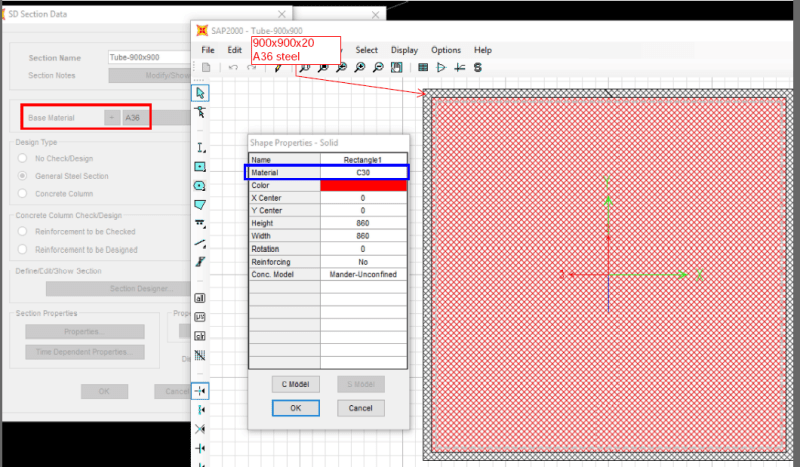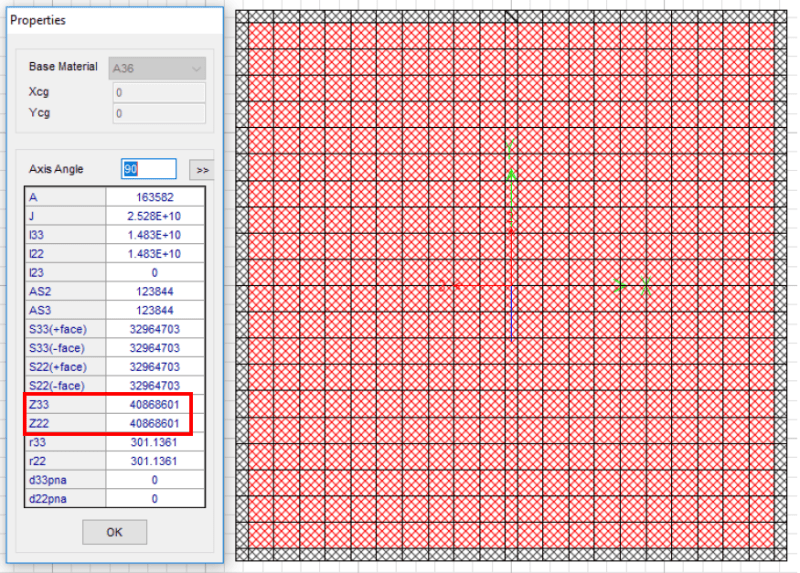Blackstar123
Civil/Environmental
I am trying to verify cross-sectional properties calculated by Section designer in sap2000 with different base material and material of shape.
For this exercise I've defined A36 as base material and C30 as material of the shape inside the section designer.
I've verified cross-sectional properties such as A,I,S & r, except plastic section modulus Z.
I'm calculating Z for a rectangular shape as follows.
Z = (Ec/Es)b(d^2)/4
Ec/Es for my case will be equals to 1/8.
Software result for Z only, is being calculated for Ec/Es = 1/9.
Sap2000 is calculating Z like this for other cross-sections too. Does anyone have any idea why sap is doing this?
P.S. I've verified the cross-sectional properties for same base material and material of shape. My manual results does match with software results.
For this exercise I've defined A36 as base material and C30 as material of the shape inside the section designer.
I've verified cross-sectional properties such as A,I,S & r, except plastic section modulus Z.
I'm calculating Z for a rectangular shape as follows.
Z = (Ec/Es)b(d^2)/4
Ec/Es for my case will be equals to 1/8.
Software result for Z only, is being calculated for Ec/Es = 1/9.
Sap2000 is calculating Z like this for other cross-sections too. Does anyone have any idea why sap is doing this?
P.S. I've verified the cross-sectional properties for same base material and material of shape. My manual results does match with software results.



